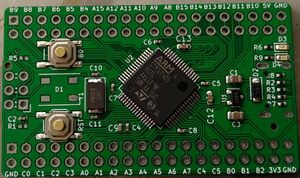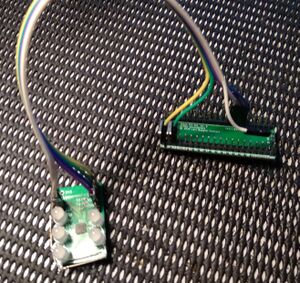Difference between revisions of "Stm32Dev - rev. b"
| Line 21: | Line 21: | ||
Having the buttons is just a massive convenience on a development board. | Having the buttons is just a massive convenience on a development board. | ||
| − | + | The Micro-SD was added as an afterthought. There was space available and footprints are free. Since I had used it in a previous project and had a few lying around, I used the [https://lcsc.com/product-detail/Card-Sockets-Connectors_HRS-Hirose-DM3D-SF_C719027.html Hirose DM3D-SF] connector. | |
== Schematics == | == Schematics == | ||
Revision as of 02:06, 12 December 2020
When designing the Stm32Dev - first version a number of mistakes was made. This lead naturally to the development of Stm32Dev - rev. b.
While the overall design is identical to the first version, a number of tweaks were made. These include:
- Double headers
- Different choice of LDO
- Buttons for NRST and Boot0
- 8 MHz Crystal
- Regular blue LED on PC13
- WS2812B hanging off of PC6
- SD-Card
The reasoning behind these choices should be pretty darn obvious, but let me go through them anyway.
I absolutely positively despise breadboards. True, I might have had bad experiences because my breadboards were cheap crap, but I find myself spending more time chasing down lose connections than I do doing anything productive, so I generally much prefer just to wire stuff up using jumper leads directly on the headers. By using that approach I regularly end up in a situation where I need two leads connected to one pin, hence having a dual row is convenient.
The LDO on the original board was massively over dimensioned (can handle up to 1-2 amps). Switched that to a Torex Semicon XC6206P332MR which will happily handle the 500 mA possible from a USB port.
Having the buttons is just a massive convenience on a development board.
The Micro-SD was added as an afterthought. There was space available and footprints are free. Since I had used it in a previous project and had a few lying around, I used the Hirose DM3D-SF connector.
Schematics
The full schematics is as:


